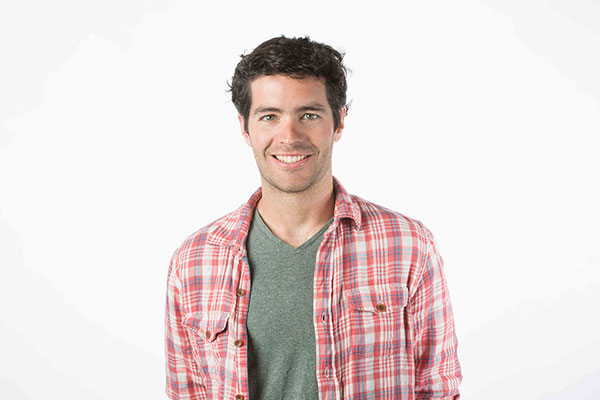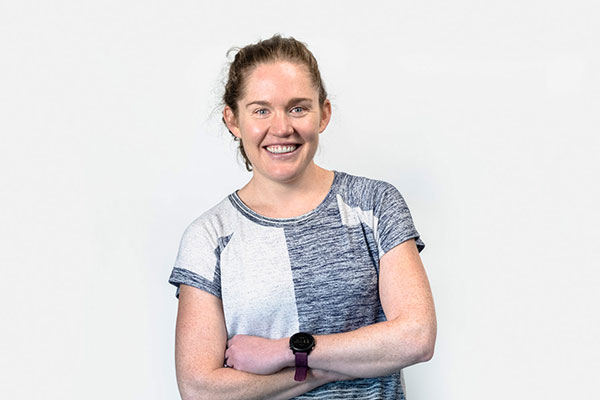ENDURANCE & HEALTH - ARE THEY AT ODDS?
BY  DAN FEENEY
DAN FEENEY  KATE HARRISON
KATE HARRISON
Follow on ![]() @Dfeeney31 and @running_geek
@Dfeeney31 and @running_geek

Quick Takes
- Conventional wisdom that training too much will leave you injured is flawed; many studies show that those who spend more time training are more resilient to injury (but that point differs between athletes).
- Staying healthy may be more affected by the rate at which you increase training – volume, intensity, frequency – than your absolute training load at any one time.
- There is no universal ‘best’ shoe for everyone; work with your local retailers to find something that works best for you and your mechanics.

Dan’s Take
As a lifelong runner and biomechanist, I am – of course – interested in the relations between training, shoes, and injury, however I’ve always had a nuanced point of view about what is “correct.” Simply put, I think there is no single right way to run, best pair of shoes, or optimal training strategy. Instead, each person must work with their body’s geometry, motivation, and previous experiences to find what works best for them. Finding your correct recipe of training and footwear can keep you running along happily and only taking days off when you want to, instead of being sidelined by injury.

Kate’s Take
I’ve heard from many runners that they have a mileage ceiling, above which they get hurt. I’ve had my fair share of niggles and injuries, which makes me passionate about exploring this relation as both an athlete and scientist. Certainly, a surefire way to avoid overuse injury is to sit on the couch, but that’s not healthy in the long term either! Fortunately, research is emerging showing that we don’t need to place limits on our training and endurance performance. In fact, more training can make us stronger and more resistant to injury. If we can follow a gradual progression of training and adaptation, we can achieve our goals and be all the more fit and healthy for it.

BOA’s Take
At BOA, we’re not about setting limits on endurance performance – just the opposite. Our mission is to go further, faster, and stronger. To keep progressing, day after day, we know we need to support athletes’ health. We believe we can deliver both endurance and health benefits by creating products that provide a fit that can be tuned to each athlete’s needs so they can get the most out of their footwear.

Research on the Topic
Training
If you have experienced a sports injury, you’re certainly not alone. Any sample of runners will experience injury incidences ranging from 20-80% each year, depending on the type of runner and what is considered a full-blown injury. Anecdotally, many runners, coaches, and clinicians attribute injury to too much training. Indeed, chronic overuse injuries, the most common type for runners, stem not from a single blow, but from cumulated micro damage of thousands of steps, strokes, etc. It’s understandably easy to jump to the conclusion that we need to stay below some amount of training volume to keep from getting hurt.
And yet, when researchers examine the relation between injury and training volume, this theory does not hold up. Several studies to date show that runners who perform a higher number of weekly miles actually have lower risk of injury than their lower-mileage counterparts. There is some nuance to these results, as certain types of injuries are more common in each group. However, if your goal is to be able to train uninhibited by any sort of pain or dysfunction, the trick seems to be working yourself up to a consistent and rigorous training program. In fact, one hypothesis among sports scientists is that training can act as a “vaccine” against injury – as our body adapts to the training stimulus, they become stronger and more resilient to damage. Moreover – and contrary to the beliefs of many – there is substantial evidence that running does not initiate knee osteoarthritis!
While it is promising that athletes can safely reach the level of training required to reach high levels of endurance performance, exactly how to get there is not entirely clear. In the running community, the “10% rule” – which suggests increasing mileage by no more than 10% from one week to the next, is often touted. However, Buist et al. have shown that those getting into running seem to be able to increase by 20% per week just as safely, which suggests there may be more room for progression than many believe, at least early in a runner’s career. It's important to keep in mind, a group of leading sports scientists and biomechanists also point out that volume is not the only factor that should be used to assess training load – intensity, biomechanics, physiological response and perceived effort are as important – if not more important – than distance alone. At this point, likely the best advice is not to increase volume or intensity too much at once and pay attention to whether you are more tired, sore, or irritable than usual.
One of the track and field throws coaches at Dan’s University had previously coached high school cross country runners. Despite never being a runner, he said his general principle was, “if they finished their workouts chatting and laughing, they could go hard the next day. If not, they went easy.” There may be quite a bit of merit to that approach.

Saucony Switchback 2
FOOTWEAR
After decades of attempts, nobody has cracked the relation between shoes and injury risk. Shoes have been designed to prevent the inward rolling of the ankle and foot during gait, to create a more efficient rollover shape, to be minimal, maximal, and everywhere in between. Despite these changes, Benno Nigg – legendary professor from the University of Calgary – points out that there has not been a substantial change in rate of injury among runners. Instead of focusing on technology that forces runners into a universally “optimal” movement pattern, Nigg proposed this lack of runners might benefit from choosing shoes according to their personal ‘comfort filter’, where runners select a shoe that automatically reduces their injury risk. Moreover, injury risk is multifactorial so searching for a reduction in injury risk based solely on the properties of shoes neglects many other variables that must be accounted for in order to make a causal link to injury rates. For more on the topic of causation, check out The Book of Why which explores the entire scientific field of causation. Despite some failed attempts to eliminate injuries, we have learned quite a bit about the relation between footwear and endurance performance.
Just as with training, most footwear is marketed to either improve sports performance or prevent injury, but almost never both. Traditionally, racing shoes were light, with minimal cushioning, to promote elements of increased endurance, while motion control shoes were heavy, with beefy midsoles of high-density foam, and designed to decrease the risk of injury. Nowadays, we know that motion control shoes are not the magic ticket for staying healthy. And, we know that cushioning can help runners save energy during races. The advent of lightweight, highly resilient foams means that we can maximize cushioning while keeping weight low. Many runners report feeling less sore after hard races and workouts in these highly cushioned shoes, and early indications from researchers suggest this isn’t just in their heads.
In addition to attenuating some of the forces applied to the body through cushioning, we know that certain movement patterns can influence how these forces are distributed across your joints, and thus also play a role in injury. Factors such as hip and knee collapse in the frontal plane (moving sideways towards the midline of your body) are associated with the development of running related injuries. Interestingly, it seems that movement “wasted” in the side-to-side direction may also detract from running economy. Shoes can be designed to provide feedback our neuromuscular system, either through the midsole geometry or upper fit, to help us have a better sense of our body’s position in space, and move more efficiently. Yet again, factors that keep us healthy also seem to support peak endurance performance.

Kate Harrison preparing for tests in the Performance Fit Lab.
How we test
The effects of footwear on endurance and health are difficult to test directly. For example, if an athlete races a 5k one weekend, and then switches shoes and races another in two weeks, any difference in race performance could be due to the shoes, but it could also be due to what they ate, the training they performed in the days prior, the weather, etc. It’s even harder to track injuries over months of training; try to retrospectively pinpoint exactly when your last injury began. As with many labs, we choose important factors that previous research has demonstrated are key indicators of endurance performance and injury risk. We then apply them through a protocol that allows us to measure them in our lab in a single session, removing much of the day-to-day variability.
To ascertain how shoes affect endurance performance, we measure running economy – how much energy is required to run at a certain pace. If you can run the given pace using less energy than another runner, chances are you will be able to speed up a little bit to beat them to the finish line – just ask researcher Rodger Kram or any of his proteges. We also know that certain aspects of your biomechanics – including how force is applied to your body, and your body’s position through your stride, can indicate risk of various types of injuries. We measure these indicators, including loading rate, peak tibial force, knee motion and loading, to understand how shoe design affects the load applied to your feet and legs.

La Sportiva VK
What does this mean for retail?
Discussions from customers do not stop at what new technology is in the midsole. Many customers ask about where to run, how to stay injury free, and for training advice. To provide a full-service experience and the value that the customer is seeking, shop employees need to be conversational in the science behind endurance performance and injury risk factors. It’s pretty easy to repeat what you were taught or heard years ago, but as science progresses, its critical to keep an open mind. Having worked in a specialty run shop during the barefoot running frenzy of the early 2010’s, it was nearly impossible to convince a runner to consider a slow and balanced approach to adapting to their brand-new minimal shoes. As with any new stimulus (whether it is adding in speed work or a different functional shoe like a racing flat), add the stimulus slowly and keep track of how you respond over time.
What does this mean for the athlete?
This is great news for athletes. Instead of feeling like we need to choose between health and endurance, we can make training and footwear choices to optimize both – a win-win!
Concluding remarks
Health and endurance performance are not mutually exclusive. These attributes actually go hand-in-hand and both should be considered when finding your next pair of running shoes.
We can be found in twitter .@Dfeeney31 and .@running_geek